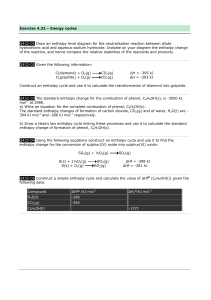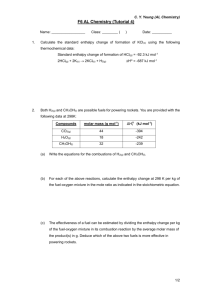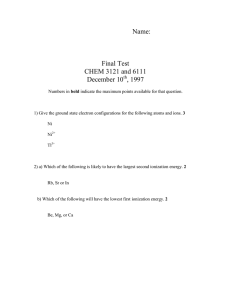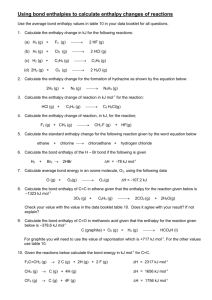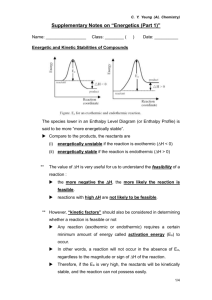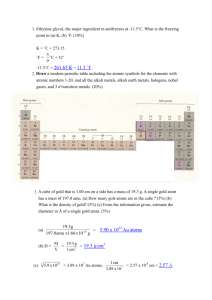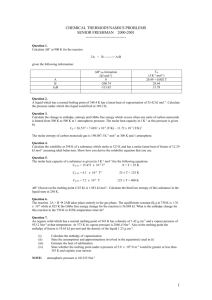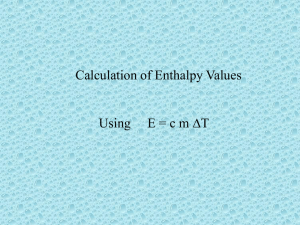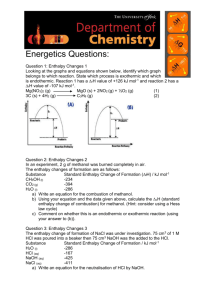Read the following sentences carefully and use them to
advertisement
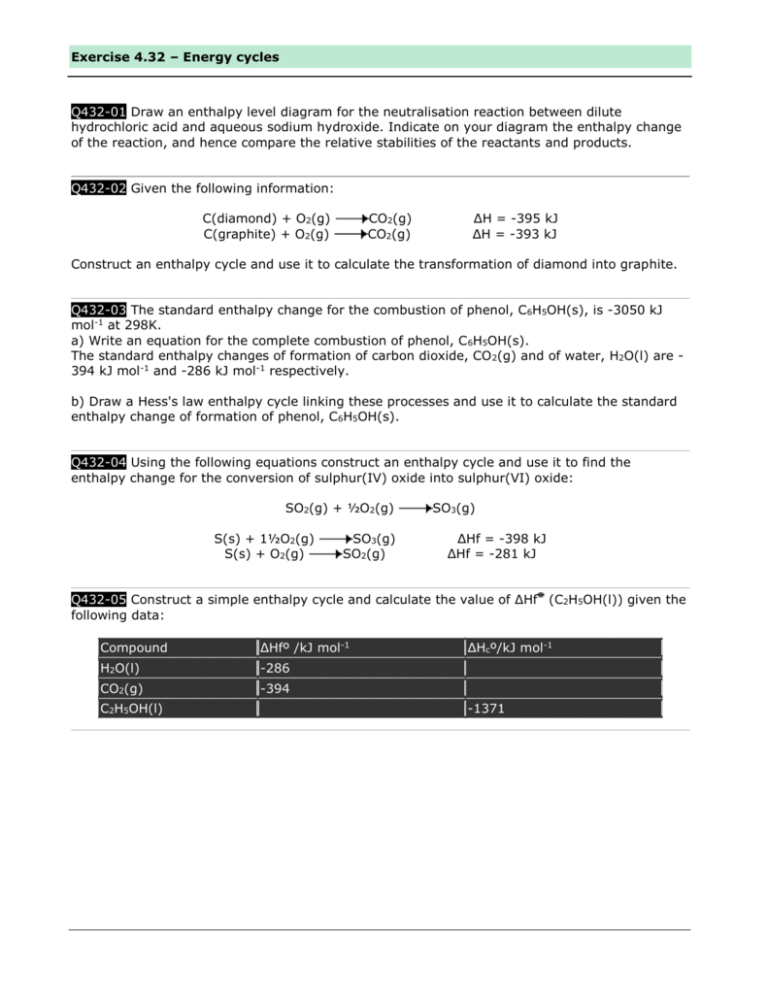
Exercise 4.32 – Energy cycles Q432-01 Draw an enthalpy level diagram for the neutralisation reaction between dilute hydrochloric acid and aqueous sodium hydroxide. Indicate on your diagram the enthalpy change of the reaction, and hence compare the relative stabilities of the reactants and products. Q432-02 Given the following information: C(diamond) + O2(g) C(graphite) + O2(g) CO2(g) CO2(g) ΔH = -395 kJ ΔH = -393 kJ Construct an enthalpy cycle and use it to calculate the transformation of diamond into graphite. Q432-03 The standard enthalpy change for the combustion of phenol, C6H5OH(s), is -3050 kJ mol-1 at 298K. a) Write an equation for the complete combustion of phenol, C 6H5OH(s). The standard enthalpy changes of formation of carbon dioxide, CO 2(g) and of water, H2O(l) are 394 kJ mol-1 and -286 kJ mol-1 respectively. b) Draw a Hess's law enthalpy cycle linking these processes and use it to calculate the standard enthalpy change of formation of phenol, C6H5OH(s). Q432-04 Using the following equations construct an enthalpy cycle and use it to find the enthalpy change for the conversion of sulphur(IV) oxide into sulphur(VI) oxide: SO2(g) + ½O2(g) S(s) + 1½O2(g) S(s) + O2(g) SO3(g) SO2(g) SO3(g) ΔHf = -398 kJ ΔHf = -281 kJ Q432-05 Construct a simple enthalpy cycle and calculate the value of ΔHf (C2H5OH(l)) given the following data: Compound ΔHfº /kJ mol-1 H2O(l) -286 CO2(g) -394 C2H5OH(l) ΔHcº/kJ mol-1 -1371
